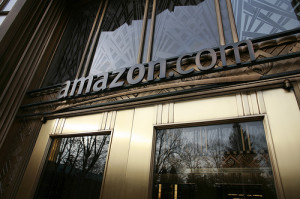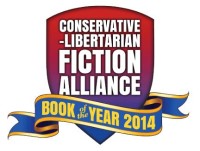Amid the never-ending anti-Amazon rants, one occasionally finds a piece that aspires to be grounded in facts and statistics. Well, this new one, by Suw Charman-Anderson in Forbes, is a classic example of how to misread (and misreport) statistics in order to come to dumb conclusions.
The writer discusses a May 2012 survey of Amazon book purchasers, which tried to determine how the customers made their purchasing decisions. She reports the…
…statistics show that only a piddling 10 percent of Amazon book choices are made because of its ‘bought this/also bought’ recommendation engine. Bestseller and top 100 lists influence 17 percent of book choices, with 12 percent down to promotions, deals, or low prices. Only 3 percent came through browsing categories. Planned search by author or topic, however, makes up a whopping 48 percent of all book choices.
Her first conclusion from these statistics? “Amazon is a destination for purchase, the place you funnel your fans to, not a discovery mechanism in and of itself. People are simply not browsing for books based on Amazon’s recommendations, not in any significant numbers.”
 Let’s leave aside the facts that (1) the survey data represent only a freeze-frame snapshot of Amazon book purchasers in May 2012, and (2) that if 48% of book choices came from customers’ planned searches, then 52% — more than half — did not; yet the writer calls the 48% “whopping,” while dismissing the 52% as “not…significant numbers.” She later even states that these figures show that “the majority of Amazon’s sales come from planned search.”
Let’s leave aside the facts that (1) the survey data represent only a freeze-frame snapshot of Amazon book purchasers in May 2012, and (2) that if 48% of book choices came from customers’ planned searches, then 52% — more than half — did not; yet the writer calls the 48% “whopping,” while dismissing the 52% as “not…significant numbers.” She later even states that these figures show that “the majority of Amazon’s sales come from planned search.”
Forty-eight percent is a “majority”?
Based on her first conclusion, plus these dubious characterizations of the data upon which it is based, the writer then goes on to make a broader case:
Self-published authors have limited resources for promotion and these figures show that you should focus not on trying to woo Amazon’s algorithm, but on building awareness outside of Amazon. Rather than hoping to gain traction within that 10 percent of people who pay attention to Amazon’s recommendations, or trying to crowbar your title into bestseller or top 100 lists, you should be focusing on building an independent fan base. No one can search for your books if they don’t know you exist.
I read this and realized at once that these conclusions, which are being echoed elsewhere, don’t conform to my direct personal experience — or to common sense. Please bear with me while I elaborate:
When I published my debut thriller, HUNTER, in June 2011, I already had something of a “brand,” having been a nonfiction writer for decades. I also tried to enhance my brand by expanding my online “platforms.” I launched this blog, “The Vigilante Author,” to position me in the minds of thriller readers who like and are looking for that kind of fiction. I did a lot of social media: Facebook, interviews with other bloggers, etc. HUNTER received several nice, if temporary, sales surges when a few big blogs mentioned it.
I also tried to promote the book via the online retailers and their internal promotional methods. By means of links, I directed readers to where they could then buy the book: not just links to Amazon, but equally to Barnes & Noble (for the Nook) and Smashwords (for iTunes, the iPad and iPhone, Kobo, and other ereading devices). I encouraged happy readers to leave customer reviews on those various online sales sites. And I worked to craft a compelling product description that I posted on all of them, so that once the curious went to those product pages, they’d get a strong pitch to close the sale.
Overall, the novel did pretty well for the first five months, selling 4,000 copies at an ebook price of $3.99. Yet almost all of those sales were on Amazon, not on any of the other sites. All my external promotional efforts, and the publicity they generated, resulted in utterly paltry sales — a combined total of only 132 books — on Barnes & Noble’s Nook, on Smashwords, and on iTunes.
So, if my “external promotions” were the factor most critical to sales, then why weren’t my sales spread more evenly among all online retailers? Why did Amazon sell thirty times more copies of my book than did all of their competitors combined?
 You see, it wasn’t only my external efforts bringing attention to the book. For one thing, HUNTER had soared to near the top of the “customer rating” lists on Amazon. It also quickly garnered a lot of highly positive “customer reviews.” And Amazon recommended it in promotional emails and online to readers of similar books. Soon, it creeped up several Amazon subcategory bestseller lists, adding to its visibility.
You see, it wasn’t only my external efforts bringing attention to the book. For one thing, HUNTER had soared to near the top of the “customer rating” lists on Amazon. It also quickly garnered a lot of highly positive “customer reviews.” And Amazon recommended it in promotional emails and online to readers of similar books. Soon, it creeped up several Amazon subcategory bestseller lists, adding to its visibility.
By contrast, it did not get that kind of visibility and attention from the other retailers. I’m absolutely convinced that Amazon’s internal promotions explain why the book was selling so well there, but nowhere else.
Then, five months after its publication, Amazon invited me to enter HUNTER into a week-long, post-Thanksgiving sales promotion, along with scores of other books, lowering its price temporarily from $3.99 to $1.99. Simultaneously, from among those scores of promoted titles, they also selected HUNTER as one of eighteen top “Editors’ Picks.”
As a result, the book was showcased prominently at the very top of about a half-dozen different pages of the Amazon Kindle website. You simply could not go to the Kindle home page, its “Editors’ Pick” page, its special sales promotional page, its “Movers and Shakers” page, or its various category “recommendation” pages, without HUNTER’s eye-catching cover staring you in the face. It began appearing on a lot of “also bought” recommendation lists for other bestselling books in its categories, too.
Literally overnight, sales exploded, from a few dozen per day to thousands per day. By the last day of the sale, HUNTER was the #4 bestselling product on Kindle, and it hit #1 in the “Mysteries and Thrillers” category (and several subcategories), as well as #1 in “Romantic Suspense.” That prominent positioning further enhanced its visibility to Amazon customers.
It’s interesting to note what happened in the days, weeks, and months afterward. Once the price went back up to $3.99 and HUNTER was no longer featured prominently on those various promotional pages, its sales began to decline. However, it took a month for the book to fall out of the overall Kindle “Top 100” list. During those four weeks, it was still highly positioned on multiple category bestseller lists, and thus “discoverable” to millions of customers browsing those lists, and so it continued to sell hundreds of copies per day.
In the months following — despite all my efforts to keep the book in the public eye — the novel’s sales continued to slide slowly back down to its pre-promotional levels, levels similar to what it had been selling right after I published it. By then, it had become far less visible — thus discoverable — to customers browsing Amazon…even though my outside promotions, publicity, and name-recognition had never been better.
It’s obvious that those sudden, massive sales (over 50,000 copies in just 35 days) did not occur because my independent marketing efforts were driving purchasers to Amazon to look specifically for my book. No, that huge, months-long sales spike came almost entirely from attention generated internally by Amazon alone, via its promotions, bestseller-list placements, and algorithm-governed recommendation system.
Fellow authors participating in that same post-Thanksgiving promotion also saw significant spikes in their sales, though not as great as mine. The only significant difference among us was that their works were not featured quite as prominently or on as many Amazon pages. We see this same phenomenon repeated every single day with “Kindle Daily Deals,” where a product or book is singled out for spotlight attention and invariably soars right to the top of the Kindle bestseller list — then sinks in the days that follow, despite every effort by the author to keep it up there.
What do I take away from all this?
 Based on personal experience, I do believe that an author’s “outside” promotional efforts — if planned and conducted prudently, applying sound marketing principles — can help to generate solid, ongoing sales. For example, I think it’s important for an author to distinguish himself from the pack, and thus become discoverable, by establishing a unique brand via marketing methods external to Amazon’s. And yes, I do believe that word-of-mouth recommendations from a loyal, steadily growing fan base are the most reliable long-term way to generate an enduring “long tail” of sales.
Based on personal experience, I do believe that an author’s “outside” promotional efforts — if planned and conducted prudently, applying sound marketing principles — can help to generate solid, ongoing sales. For example, I think it’s important for an author to distinguish himself from the pack, and thus become discoverable, by establishing a unique brand via marketing methods external to Amazon’s. And yes, I do believe that word-of-mouth recommendations from a loyal, steadily growing fan base are the most reliable long-term way to generate an enduring “long tail” of sales.
However, I think the wrong message to take away from the statistics reported in Forbes is the one presented by the blog’s author: that Amazon’s promotions, bestseller lists, staff picks, “also bought” recommendations, and categories don’t really matter as much as an author’s own outside promotions. Or, to quote her own words again: “People are simply not browsing for books based on Amazon’s recommendations, not in any significant numbers.”
That’s wrong, mainly because the writer (whose bio gives little evidence of personal expertise in successful bookselling) misinterprets the reported customer purchase percentages. The fact that 48% of Amazon’s book customers went there in May 2012 with a specifically planned purchase in mind, does not mean that 48% of a given author’s buyers will go to Amazon specifically to buy his or her book. Nor (still citing statistics from the survey) does it mean that “only” 12% of a given author’s sales will come from special Amazon promotions, “only” 3% from people browsing through the various book categories, etc.
That’s a completely erroneous reading of the reported percentages — because Amazon’s aggregate customers are not the same statistical set as one’s own specific customers.
Suppose your book is selected for a special promotion to “only” the (supposed) 12% of Amazon’s book buyers who pay attention to such promotions. Well, 12% of Amazon’s tens of millions of book buyers is still an enormous audience. And if they notice it, you may then find that 95% of your own sales will come from that 12%.
Moreover, the Forbes writer — her thinking perhaps clouded by an anti-Amazon bias (note her closing sentence, and repeatedly critical articles) — also ignores statistics from the same study that should give her pause. As reported here,
Two years ago, 35% of book purchases were made because readers found out about a book in bricks-and-mortar bookstores, the single-largest site of discovery. This year, that figure has dropped to 17%…. In the same period, personal recommendations grew the most, to 22% from 14%. Some three-quarters of personal recommendations are made in person, while the rest come by e-mail (8%), phone (7%), Facebook (4%) and other social networks (3%).
So even now, just 22% of book customers buy them based on personal recommendations, and only 7% from recommendations on social media. Yet the Forbes writer stubbornly urges authors to go “outside of Amazon,” relying on such promotional things as “reviews, social media or word of mouth,” and to “refocus on direct sales…[from] your own shop” (presumably meaning one’s own online store).
As every bestselling Amazon author learns, a huge percentage of his or her sales come from Amazon’s internal promotional methods. Usually, one’s own external promotions merely kickstart the process of pushing the book under an Amazon spotlight. Once under that glaring spotlight, even an obscure author, with few prior sales and zero social media presence, can see his sales suddenly spike overnight, to the point where 99% of them are Amazon-generated. This sort of thing happens a lot.
Let me stress this point: I think it’s vitally important for any indie author to define and implement a marketing plan that includes promotions that don’t rely on Amazon’s (or those of any other online retailing outlet). It’s important to build your brand, to distinguish your work, to utilize a variety of platforms that grant it visibility, and to connect personally with readers in order to encourage long-term, word-of-mouth-driven sales. It also makes sense to try to sell directly to the consumer.
But these activities are not an either/or proposition, vis-a-vis Amazon. They should be done, not instead of, but in conjunction with efforts to exploit the Amazon platform. It’s just plain silly to believe that one’s own marketing alone can possibly equal or exceed the time-tested techniques and global reach of the world’s biggest online retailer.
So, if strong sales are part of his objectives, then the wise author will do what he can to take full advantage of those mechanisms and that unparalleled retailing power.

 Photo (c) by Debbie Scott
Photo (c) by Debbie Scott




